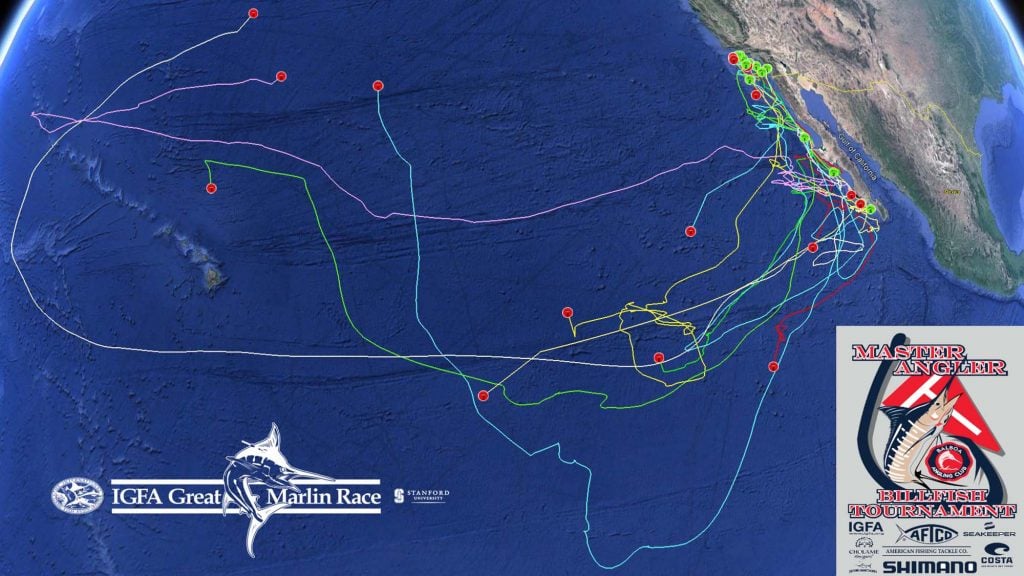The 2020 Master Angler Billfish Tournament/Magdalena Bay Results Are In!!
The 2020 MABT event marked the 6th year of IGMR participation with six tags successfully deployed on striped marlin in October and November of 2020 off Mexico’s Baja coast near Magdalena Bay. Initially the MABT was to deploy the six tags off Southern California, but slow fishing led to the decision to deploy tags on vessels traveling to Mexico in the following weeks.
The race was won by a 150lb striped marlin tag sponsored by The Tuna Club of Avalon that popped up after a full duration of 240 days and 2,122nm from where it was deployed, marking the longest point-to-point distance ever recorded for striped marlin in the IGMR. The tag was deployed by Sawyer Jones on the fish caught by Cale Rogers aboard the Burning Daylight captained by Hunter Heatley. This marlin is estimated to have travelled a total track distance of 6,729nm, looping around the island chain of Hawaii before heading back toward the northeast. The winning marlin spent 65% of its time shallower than 10m depth and dove to a maximum depth of 219m or 718ft!
Second place in the race goes to another 150lb striped marlin tag sponsored by The Tuna Club of Avalon that was also tagged aboard the Burning Daylight captained by Hunter Heatley. This tag was deployed by Sawyer Jones and the fish was caught by Mike Oliver. After a full 240-day deployment the tag popped up 1,529nm from where the fish was caught. It is estimated that this fish traveled a total distance of 2,613nm, spending 60% of the time shallower than 10m and reaching a maximum depth of 220m (722ft).
Third place in the 2020 MABT race goes to a 110lb striped marlin tag sponsored by the Crean Foundation. This fish was caught by Doug Bull and tagged by Kenny Knight aboard the Reel Time captained by Grant Hunner. This tag popped up after 152 days on the fish, 715nm from the deployment location. The total track distance for this fish is estimated to be 1,110nm. A marlin spent 65% of its time shallower than 10m and dove to a maximum depth of 104.5m (343ft).
Over the six years of the MABT IGMR, a total of 17 tags have produced incredible data with many tagged striped marlin showing a tendency to travel toward the west and southwest after residing off the Baja coast. Considering the vulnerability of these fish to commercial fisheries in the Pacific and the long migrations they are capable of undertaking, a better understanding of striped marlin ecology relative to their environment and management is critical to conserving the stock.

The IGFA and our scientific partner, Stanford University, would like to thank our tag sponsors, captains, anglers, crews, and participants of the 2020 MABT IGMR event. The addition of these striped marlin datasets helps advance our understanding of striped marlin behavior and stock structure, which will increase our ability to conserve and manage these important billfish for future generations.
